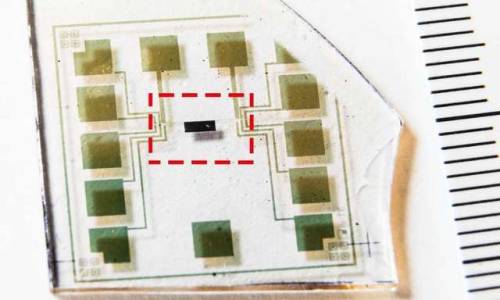#linköping university
Artificial muscles powered by glucose
Artificial muscles made from polymers can now be powered by energy from glucose and oxygen, just like biological muscles. This advance may be a step on the way to implantable artificial muscles or autonomous microrobots powered by biomolecules in their surroundings. Researchers at Linköping University, Sweden, have presented their results in the journal Advanced Materials.
The motion of our muscles is powered by energy that is released when glucose and oxygen take part in biochemical reactions. In a similar way, manufactured actuators can convert energy to motion, but the energy in this case comes from other sources, such as electricity. Scientists at Linköping University, Sweden, wanted to develop artificial musclesthat act more like biological muscles. They have now demonstrated the principle using artificial muscles powered by the same glucose and oxygen as our bodies use.
The researchers have used an electroactive polymer, polypyrrole, which changes volume when an electrical current is passed. The artificial muscle, known as a “polymer actuator,” consists of three layers: a thin membrane layer between two layers of electroactive polymer. This design has been used in the field for many years. It works when the material on one side of the membrane acquires a positive electrical charge and ions are expelled, causing it to shrink. At the same time, the material on the other side acquires a negative electrical charge and ions are inserted, which causes the material to expand. The changes in volume cause the actuator to bend in one direction, in the same way that a muscle contracts.
Post link
A major step forward in organic electronics
Researchers at the Laboratory of Organic Electronics, Linköping University, have developed the world’s first complementary electrochemical logic circuits that can function stably for long periods in water. This is a highly significant breakthrough in the development of bioelectronics.
The first printable organic electrochemical transistors were presented by researchers at LiU as early as 2002, and research since then has progressed rapidly. Several organic electronic components, such as light-emitting diodes and electrochromic displays, are already commercially available.
The most commonly used material is PEDOT:PSS, which is a p-type material in which the charge carriers are holes. In order to construct effective electron components, a complementary material, n-type, is required, in which the charge carriers are electrons. It has been difficult to find a sufficiently stable polymer material that can operate in water media and in which the long polymer chains can sustain high current when the material is doped.
In an article in Advanced Materials, Simone Fabiano and colleagues have presented results from an n-type conducting material in which the ladder-type structure of the polymer backbone favours ambient stability and high current when doped. One example is BBL, poly(benzimidazobenzophenanthroline), a material often used in solar cell research.
Post link


